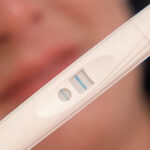You and your significant other have decided it’s time to have a baby. Unfortunately, wanting a baby doesn’t always make pregnancy happen any quicker. A woman has only two or three fertile days each month. This provides only a small window of opportunity to become impregnated. Learning to understand your body and its monthly ovulation cycle will help you determine the best time to get pregnant.
What is Ovulation?
Ovulation is the fertile period in which a mature egg, or ovum, is released into the woman’s uterus. The ovum is ready for fertilization at this time. The egg survives for approximately 24 hours and must be fertilized within that timeframe in order for reproduction to occur. Determining when ovulation occurs in your body will help you pinpoint the best time to get pregnant.
When Does Ovulation Occur?
Ovulation does not occur at the exact same time of the month for every woman. It’s possible you’ve read or heard that the best time to get pregnant is around the fourteen day of your menstrual cycle. This may be true, if you have a regular 28-day cycle and ovulate at the exact middle of your cycle. But, as you’ve most likely already discovered, a woman’s body is not always that predictable. You greatly increase your odds of becoming pregnant by knowing precisely when you ovulate.
How Do I Know When I Ovulate?
Use An Ovulation Kit:
One way to find out your ovulation date is to use an ovulation kit. Average prices for ovulation kits range between $15-70. These kits measure the luteinizing hormone (LH) which is always present in human urine. Just before a woman’s most fertile day of the month (sometimes called the LH Surge), the LH level increases significantly. The hormone increase prompts ovulation to take place, therefore, making the next day or two the best time to get pregnant. According to the American Pregnancy Association, engaging in sexual intercourse over the next 48-72 hours after a LH Surge will maximize your chances of getting pregnant during that cycle.
Chart Your Basal Body Temperature and Cervical Mucus:
Another, less expensive, way to pinpoint your ovulation period is to create a basal body temperature/cervical mucus chart. To obtain a sample chart and a printable blank chart for your use, you can visit Baby Center’s Web site. This chart is also available at your physician’s office and on various other pregnancy websites.
You should begin tracking your basal body temperature (BBT) on the first day of your period. Your BBT reading is your temperature when you first wake up in the morning, so be sure to take it before getting out of bed. It is possible to use a digital thermometer, however you’ll get a more accurate measurement with a basal thermometer because it shows even very small changes in your temperature. Your temperature rises between .4 – .8 degrees Fahrenheit on your ovulation day. When you notice a spike in temperature, you have already ovulated (unless, of course, you have outside stressors affecting your temperature). For this reason, you will probably have to use this chart for a month or two before you get an accurate feel for the best time for you to get pregnant.
Once you’ve charted your temperature, go to the bathroom to check your cervical mucus. This process may seem unappealing to you but changes in your cervical mucus can be one the best indicators of impending ovulation. To test the mucus, use your finger or piece of toilet paper to collect a small sample. Note whether the cervical mucus is not present, sticky, or egg white. When the cervical mucus is thin, stretchy, and resembles the consistency of egg whites, you are the most fertile.
After the first month of charting, you should notice a fairly consistent pattern in your cycle. You’ll also notice it’s easier to identify the different stages of your monthly cycle. Your ovulation cycle occurs when your cervical mucus becomes clear and slippery (egg white) and right before you have a sharp increase in body temperature.
This is the method I chose when trying to conceive my children. After charting for about one or two months, I was able to accurately pinpoint my ovulation period and conceived two beautiful children. The daily process of tracking your cycle with a basal body temperature/cervical mucus chart may seem extensive but it has been proven successful. If the end result is a desired baby, isn’t it worth a short five minute inconvenience in the morning?
How Do I Use the Ovulation Data to Get Pregnant?
The best way to get pregnant, once you’ve determined the approximate time of ovulation, is to have intercourse about four day before that ovulation date. Alternate intercourse every other day over the next few days (this will help replenish sperm count to full capacity). Don’t wait until the day of ovulation to have sexual intercourse. Although your egg only lasts one day, your partner’s sperm will last for up to three to five days. Having sex two to three days before ovulation will increase the chances of the egg becoming fertilized and you getting pregnant.
Remember, conceiving something as precious as a child takes time. Try to relax and use that waiting period to read up on what to expect during pregnancy and parenthood. Good luck with your baby-making adventure!
Sources:
http://www.babycenter.com/0_download-a-sample-basal-body-temperature-cervical-mucus-char_7069.bc
http://www.babycenter.com/0_sample-basal-body-temperature-cervical-mucus-chart_7252.bc
http://www.babycenter.com/
http://www.americanpregnancy.org/
http://www.amazingpregnancy.com/






